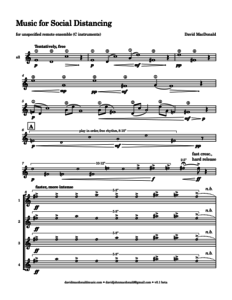A few years ago I was in a conversation about audience access to classical music. We weren’t talking about accessibility in the stylistic way, but in a more literal way. Who can afford to be in the room when a performance is given, thereby experiencing a work as intended? In popular music the “primary document” is usually a recording, which is pretty widely accessible, especially today, as it can likely be streamed for free or purchased as a download. In comparison, my music is among the least accessible music to most people around the world. Even though a recording of a performance might be widely distributed, that’s far from the same thing as being in a room for its performance.
On a continuum of audience access to audio media, my acoustic compositions are near one extreme. Another audio genre that I care deeply about is podcasts. I’ve been listening to podcasts since I got my first iPod around 2004, and I started making and publishing podcasts in 2011. Castbot is the first in what may become a series of electroacoustic works that are created expressly for the podcast format.
I first created Castbot in 2016, and it has been running on-and-off since then. It has gone through a number of iterations, and I’m pretty happy with its simple yet compelling output in the current version. Each night, my little bot generates a new episode of the piece based on a narrowly defined set of conditions in the software, uploads it to a sever, and updates the corresponding podcast feed.
In each episode of Castbot, a small ecosystem of virtual “audio creatures” is created and runs its course. For some reason, I think of them as birds. They fly back and forth in the stereo field, playing a stuttering rhythm on a repeating pitch. Each time they cross the center, they change pitch within the defined scale. Eventually, the birds fly off the edge of the environment and do not return. The episode ends when all the birds have flown off. To set up each episode, Castbot picks the number of creatures, the scale, and the tempo. I think of this as the weather of the environment. And the piece plays out according to the whims of the drifting birds.
I mentioned that this little bot has been running since 2016, but I’ve recently submitted it to the iTunes and Google podcast directories, which means it is now much easier to find and subscribe to. If you’re podcast-inclined, give it a listen and let me know what you think.
Links: Castbot in my portfolio, in iTunes, in Google Play, it’s own feed page.
 I wrote a piece from social distance, for social distance, for open instrumentation. In a lot of classical music social media, people have been wondering how to do live music remotely. The speed of light is (for the moment) an insurmountable limitation preventing us from having our rehearsals and concerts over Zoom, at least for most repertoire.
I wrote a piece from social distance, for social distance, for open instrumentation. In a lot of classical music social media, people have been wondering how to do live music remotely. The speed of light is (for the moment) an insurmountable limitation preventing us from having our rehearsals and concerts over Zoom, at least for most repertoire.